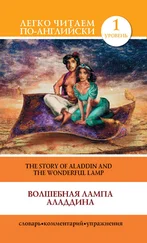Edmund Gardner - The Story of Siena and San Gimignano
Здесь есть возможность читать онлайн «Edmund Gardner - The Story of Siena and San Gimignano» — ознакомительный отрывок электронной книги совершенно бесплатно, а после прочтения отрывка купить полную версию. В некоторых случаях можно слушать аудио, скачать через торрент в формате fb2 и присутствует краткое содержание. Жанр: foreign_antique, foreign_prose, на английском языке. Описание произведения, (предисловие) а так же отзывы посетителей доступны на портале библиотеки ЛибКат.
- Название:The Story of Siena and San Gimignano
- Автор:
- Жанр:
- Год:неизвестен
- ISBN:нет данных
- Рейтинг книги:3 / 5. Голосов: 1
-
Избранное:Добавить в избранное
- Отзывы:
-
Ваша оценка:
- 60
- 1
- 2
- 3
- 4
- 5
The Story of Siena and San Gimignano: краткое содержание, описание и аннотация
Предлагаем к чтению аннотацию, описание, краткое содержание или предисловие (зависит от того, что написал сам автор книги «The Story of Siena and San Gimignano»). Если вы не нашли необходимую информацию о книге — напишите в комментариях, мы постараемся отыскать её.
The Story of Siena and San Gimignano — читать онлайн ознакомительный отрывок
Ниже представлен текст книги, разбитый по страницам. Система сохранения места последней прочитанной страницы, позволяет с удобством читать онлайн бесплатно книгу «The Story of Siena and San Gimignano», без необходимости каждый раз заново искать на чём Вы остановились. Поставьте закладку, и сможете в любой момент перейти на страницу, на которой закончили чтение.
Интервал:
Закладка:
Edmund G. Gardner
The Story of Siena and San Gimignano
THIS present volume is intended to provide a popular history of the great Republic of Siena, in such a form that it can also serve as a guide-book to that most fascinating of Tuscan cities and its neighbourhood. San Gimignano has been included, because no visitor to Siena leaves the “fair town called of the Fair Towers” unvisited; I have made special reference to it in the title of the book, to lay stress upon the point that, although for administrative purposes San Gimignano is included in the province (and in the circondario ) of Siena, its history is practically distinct from that of Siena and is more intimately connected with the story of Florence.
The appended list of books and authorities, needless to say, is not a complete bibliography, nor even a catalogue of those quoted in the course of this work. It only represents some of those that my readers will find most useful and helpful, or that will supply further information upon many topics which the limits of this series of Mediaeval Towns have compelled me to treat somewhat cursorily and scantily.
The lamented death of Miss Helen M. James deprived us of her assistance in the illustration of the last three chapters, more especially of the two dealing with San Gimignano. Her work has been at the service of this series from the beginning; but it is, perhaps, especially those who have had the privilege of knowing her, and who have had the opportunity of appreciating her character and her personality, that will realise the greatness of this loss. My friend and publisher, Mr. J. M. Dent, associates himself with me in dedicating this volume to her memory.
E. G. G.October 1902.
CHAPTER I
The Republic of Siena
SIENA remains the most perfectly mediaeval of all the larger cities of Tuscany. Its narrow streets, its spacious Gothic palaces and churches, the three hills upon which it rises enthroned, with the curiously picturesque valleys between them, are still inclosed in frowning walls of the fourteenth century. The Renaissance came to it late, gave it its enduring epithet of “soft Siena,” and blended harmoniously, almost imperceptibly, with its mediaeval spirit.
According to the more picturesque of the traditions respecting its origin, Siena was founded by Senius, the son of Remus, who brought with him the image of the Lupa , the she-wolf suckling the twins, which still remains the city’s badge. When he offered sacrifice to his gods, a dense black smoke arose from the altar of Apollo and a pure white smoke from that of Diana – in commemoration of which was made the balzana , the black and white shield of the Commune that we still see upon Siena’s gates and public buildings. There are two other shields associated with it: a blue shield with the word Libertas in gold letters; a red shield with a white lion rampant. According to other traditions, scarcely more historical, the first was granted to Siena by Charlemagne, the second (the arms of the People) by the Emperor Otto.
Siena was a place of very small importance during the dark ages. As in the case of its neighbour and rival, Florence, its epoch of greatness begins with the earlier decades of the twelfth century, in the confused period that followed the death of the Countess Matilda of Tuscany. Throughout the greater part of the twelfth century and at the beginning of the thirteenth, the Republic of Siena was nominally ruled by Consuls, who up to the middle of the twelfth century shared their authority with the Bishop. They were men of noble rank, usually three or sometimes six in number, elected by the people in the parliament that met either before the then Romanesque Duomo or in the Piazza di San Cristofano, to hold office for one year. At first the nobles were the greater power in the State; some at least were the descendants of the foreign invaders, the counts and barons of the Frankish and German Emperors, and the result of their prepotency was naturally combined with the territorial rivalry with Florence to make Siena throw in its lot with the Ghibellines, when the great struggle between Papacy and Empire, between republican ideals and feudal traditions, divided Italy. Gradually five noble families came to stand out pre-eminently as the schiatte maggiori , with special privileges from the Republic and a predominating influence in the State, names that we shall meet with again and again in Siena’s story; the Piccolomini, the Tolomei, the Malavolti, the Salimbeni and the Saracini. The Salimbeni were the richest and exercised considerable territorial sway in the contado; the Piccolomini claimed to be of pure Latin descent, and were undoubtedly of more democratic tendencies. These nobles were divided against themselves; there was bitter feud between the Salimbeni and the Tolomei, between the Malavolti and the Piccolomini. And presently the people took advantage of this to rise and claim their share in the administration of the city, and in the reformation of 1147 they obtained a third part of the government.
Gradually the Republic of Siena extended its sway over the neighbouring townlets and over the castelle of the contado, whose feudal lords were forced to reside in the city for some months in the year, to fight for the Commune in war. In spite of internal factions and dissensions, the city increased in wealth and prosperity; its commerce was largely extended; fugitives from Milan, flying from the Teutonic arms of Frederick Barbarossa, introduced the Art of Wool; Sienese gentlemen, led by Filippo Malavolti – a noble whom we dimly discern as a great figure in those far-off republican days – sailed to Syria in Pisan galleys and shared in the capture of Acre. Notwithstanding its traditional support of the imperial cause, it was in this century that Siena gave to the Church the “great Pope of the Lombard League” – Orlando Bandinelli, who during his long pontificate as Alexander III. (from 1159 to 1181) knew how to uphold the rights of Italy no less than the claims of the Papacy against the mightiest of the Kaisers. And, indeed, the Ghibellinism of the Sienese was always of a patriotic Italian type. In 1186 they closed their gates in the face of Barbarossa, believing that he meant to deprive them of their contado, and hurled back his son Henry discomfited from the Porta Camollia. At the close of the century, Siena began to have a Podestà as chief magistrate, like the other cities of Tuscany, who was probably at the outset an imperial nominee, and the consular government appears to have ceased by about 1212; while the people became associated into Arts or Guilds, somewhat resembling the more famous Florentine associations, whose representatives sat in the councils of the Republic and had their voice in the affairs of State. 1 1 Rondoni ( Sena vetus , p. 53) notes that, in contrast to Florence, there was no distinction between the Greater and Lesser Arts in Siena.
Already the glorious Duomo, though needless to say not in its present form, had been consecrated by Pope Alexander, and the Dogana stood on the site of the present Palazzo Comunale, a sign of increasing commercial prosperity. A great part of the public authority was now in the hands of the Camarlingo and the four Provveditori di Biccherna, the officials who presided over the finances of the Republic. Though for a few years we still find the names of consuls, the Podestà was from 1199 onwards the chief officer of the State; we find in 1200 and in 1201 that Filippo Malavolti held this office, but after 1211 it was invariably assigned to a foreigner. In 1208 the oldest of the Sienese palaces, the Palazzo Tolomei, was built; although burned by the people on at least two occasions, it still retains not a little of its early mediaeval aspect.
Интервал:
Закладка:
Похожие книги на «The Story of Siena and San Gimignano»
Представляем Вашему вниманию похожие книги на «The Story of Siena and San Gimignano» списком для выбора. Мы отобрали схожую по названию и смыслу литературу в надежде предоставить читателям больше вариантов отыскать новые, интересные, ещё непрочитанные произведения.
Обсуждение, отзывы о книге «The Story of Siena and San Gimignano» и просто собственные мнения читателей. Оставьте ваши комментарии, напишите, что Вы думаете о произведении, его смысле или главных героях. Укажите что конкретно понравилось, а что нет, и почему Вы так считаете.












